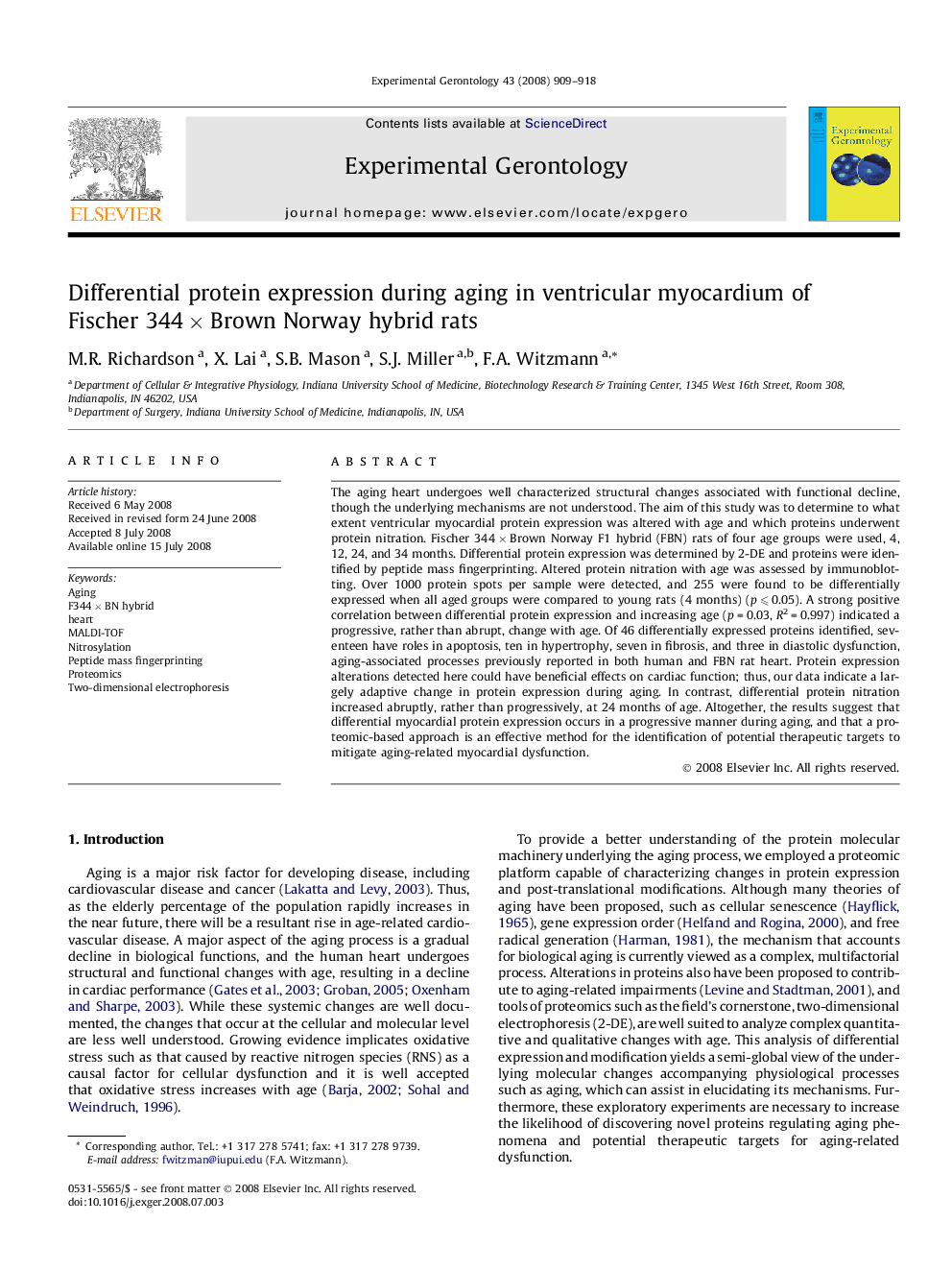| Article ID | Journal | Published Year | Pages | File Type |
|---|---|---|---|---|
| 1907000 | Experimental Gerontology | 2008 | 10 Pages |
Abstract
The aging heart undergoes well characterized structural changes associated with functional decline, though the underlying mechanisms are not understood. The aim of this study was to determine to what extent ventricular myocardial protein expression was altered with age and which proteins underwent protein nitration. Fischer 344 Ã Brown Norway F1 hybrid (FBN) rats of four age groups were used, 4, 12, 24, and 34 months. Differential protein expression was determined by 2-DE and proteins were identified by peptide mass fingerprinting. Altered protein nitration with age was assessed by immunoblotting. Over 1000 protein spots per sample were detected, and 255 were found to be differentially expressed when all aged groups were compared to young rats (4 months) (p ⩽ 0.05). A strong positive correlation between differential protein expression and increasing age (p = 0.03, R2 = 0.997) indicated a progressive, rather than abrupt, change with age. Of 46 differentially expressed proteins identified, seventeen have roles in apoptosis, ten in hypertrophy, seven in fibrosis, and three in diastolic dysfunction, aging-associated processes previously reported in both human and FBN rat heart. Protein expression alterations detected here could have beneficial effects on cardiac function; thus, our data indicate a largely adaptive change in protein expression during aging. In contrast, differential protein nitration increased abruptly, rather than progressively, at 24 months of age. Altogether, the results suggest that differential myocardial protein expression occurs in a progressive manner during aging, and that a proteomic-based approach is an effective method for the identification of potential therapeutic targets to mitigate aging-related myocardial dysfunction.
Keywords
Related Topics
Life Sciences
Biochemistry, Genetics and Molecular Biology
Ageing
Authors
M.R. Richardson, X. Lai, S.B. Mason, S.J. Miller, F.A. Witzmann,
